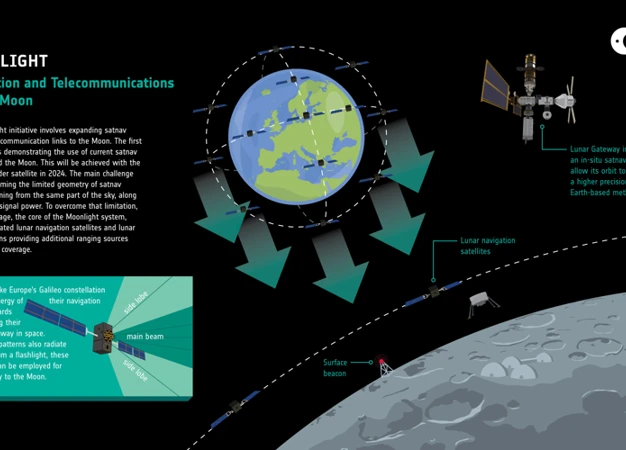Timekeeping systems have been essential tools for humanity throughout history, enabling us to measure and organize our lives according to the passage of time. However, have you ever wondered about the influence of planetary alignments on these systems? The alignment of planets, moons, and stars has fascinated humans for centuries, leading to the development of ancient and modern timekeeping methods. In this article, we will delve into the fascinating world of planetary alignments and their profound impact on timekeeping systems. Join us as we explore the historical, cultural, and even mystical aspects of this celestial phenomenon, and discover how planetary alignments continue to shape our understanding of time.
Contents
- Ancient Timekeeping Systems
- Modern Timekeeping Systems
- Influence of Planetary Alignments on Cultures
- Planetary Alignments and World Events
- Future Implications
- Conclusion
-
Frequently Asked Questions
- 1. How did ancient civilizations measure time without clocks?
- 2. Did ancient civilizations have different calendars for different purposes?
- 3. Were the ancient solar calendars accurate?
- 4. How were lunar calendars used in ancient societies?
- 5. How did ancient cultures view planetary alignments?
- 6. Were zodiac signs based on planetary alignments?
- 7. Can astrology accurately predict future events?
- 8. Did ancient civilizations track planetary alignments for practical purposes?
- 9. Are there any modern timekeeping systems that still rely on planetary alignments?
- 10. How have ancient timekeeping systems influenced our current understanding of time?
- References
-
Frequently Asked Questions
- How do planetary alignments affect timekeeping systems?
- What are some examples of solar-based calendars?
- Do lunar-based calendars rely on planetary alignments?
- How do planetary alignments contribute to the development of zodiac systems?
- What does a solar-centric timekeeping system entail?
- How are time zones and planetary alignments connected?
- What is the relationship between astrology and timekeeping?
- Are there religious and spiritual significance associated with planetary alignments?
- How do planetary alignments influence world events?
- What are some prophecies and predictions related to planetary alignments?
- References
- Read More
Ancient Timekeeping Systems
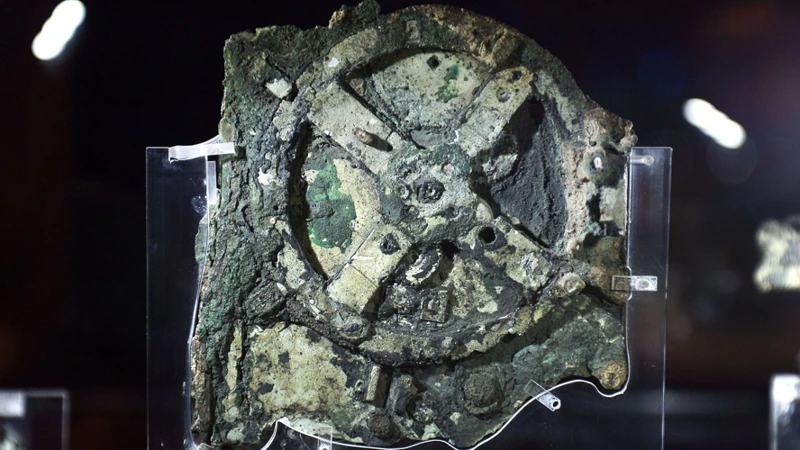
In the ancient world, civilizations developed various timekeeping systems to align their lives with the natural rhythms of the celestial bodies. One prominent type of ancient timekeeping system was the solar-based calendar, which relied on the movement of the sun to mark the passage of time. The Egyptians, for example, created a calendar with 12 months based on the solar year, with each month encompassing 30 days. Another ancient civilization, the Mayans, developed a highly accurate solar calendar known as the Long Count, which tracked time over long periods, including astronomical events such as planetary alignments.
In contrast to solar-based calendars, lunar-based calendars were also prevalent in ancient cultures. These calendars were based on the cycles of the moon, which have a duration of approximately 29.5 days. Many ancient civilizations, including the Babylonians and the Chinese, utilized lunar calendars for agricultural and religious purposes. The Babylonians, known for their advanced astronomical knowledge, used a lunar calendar divided into months and years. Similarly, the Chinese lunar calendar, still in use today, determines the date of traditional holidays such as the Chinese New Year, based on the lunar cycles.
While solar and lunar calendars played crucial roles in ancient timekeeping systems, they were often complemented by the recognition and interpretation of planetary alignments and zodiacs. Ancient cultures believed that the positioning and alignment of planets and constellations had a direct influence on their lives and events on Earth. In Mesopotamia, the birthplace of modern astrology, the alignment of planets was associated with divine messages and omens for rulers and society as a whole. This belief in the significance of planetary alignments also gave rise to the development of zodiac signs, which assigned specific traits and characteristics to individuals based on the alignment of the planets at the time of their birth. To this day, astrology continues to explore the connections between planetary alignments and individual personalities, relationships, and life events.
The ancient timekeeping systems, with their focus on solar and lunar cycles as well as planetary alignments, offer us a glimpse into the ways in which human civilizations sought to understand and navigate the passage of time. These systems not only provided practical means of tracking the days and seasons but also reflected the deeper connections humans perceived between celestial movements and earthly existence.
Solar-based Calendars
Solar-based calendars have played a significant role in the tracking of time throughout ancient civilizations. These calendars were primarily based on the movement of the sun, which was seen as a symbol of life and vitality. One such solar-based calendar was the Egyptian calendar, known as the “Civil Calendar” or the “Sothic Calendar.” It consisted of 365 days and was divided into 12 months, each comprising three weeks of ten days. The ancient Egyptians believed that the annual flooding of the Nile River, which fertilized their farmland, was influenced by the alignment of the sun with the star Sirius, known as the “Dog Star.” They developed their calendar in a way that the heliacal rising of Sirius would coincide with the beginning of their new year.
Similarly, the ancient Romans developed a solar-based calendar known as the Julian calendar, named after Julius Caesar. This calendar consisted of 365 and a quarter days, with an extra day added every fourth year to account for the fraction. It was a significant improvement over earlier calendars that failed to accurately align with the solar year. The Julian calendar formed the basis for the modern Gregorian calendar used in many parts of the world today.
Solar-based calendars not only allowed ancient civilizations to organize their daily lives and mark important events, but they also held tremendous cultural and religious significance. Festivals and celebrations were often linked to specific alignments of the sun, such as solstices and equinoxes. These events were seen as crucial turning points in the year, indicating the changing of seasons and the cycle of life. The recognition of the sun’s movements and its influence on the Earth also played a significant role in the development of religious and spiritual beliefs, as well as in the practice of astrology.
The concept of the zodiac, for example, is closely tied to solar-based calendars and planetary alignments. The zodiac is a belt of the celestial sphere divided into twelve equal parts, with each part corresponding to a particular constellation. These constellations were thought to influence the personality traits and destinies of individuals based on the alignment of the sun at the time of their birth. The study of astrological compatibility, such as the compatibility of sun and moon signs, remains popular to this day, with people seeking to understand the potential dynamics and connections between individuals based on their astrological charts.
Solar-based calendars continue to be used by various cultures and religions worldwide, serving as a way to observe and mark the passage of time in alignment with the sun. Their influence reaches far beyond mere timekeeping, permeating cultural practices, religious traditions, and even personal beliefs and interpretations of human existence and destiny.
Lunar-based Calendars
Lunar-based calendars played a significant role in ancient cultures, primarily because of the moon’s easily observable cycles. These calendars were tailored to align with the phases of the moon, with each month typically corresponding to one lunar cycle, which spans approximately 29.5 days. The lunar calendar allowed civilizations to track time according to the moon’s waxing and waning, serving as a vital tool for agricultural planning and religious observances.
One of the earliest recorded lunar-based calendars was developed by the Babylonians, who divided their calendar into 12 months based on the appearance of the new moon. Each month started with the first sighting of the crescent moon, and the calendar was adjusted periodically to account for the difference between lunar and solar years. This lunar calendar was integral to the Babylonians’ understanding of celestial events and the relationship between the heavens and daily life.
Similarly, the Chinese lunar calendar, which has been in use for thousands of years, also follows the cycles of the moon. The Chinese calendar incorporates both lunar and solar elements, with months beginning on the day of the new moon and adjusting periodically to ensure alignment with the solar year. The lunar calendar is tied to various cultural festivals and events, such as the celebration of the Chinese New Year, which falls on the second new moon after the winter solstice.
The ancient Greeks also employed lunar calendars, with each month corresponding to one lunar cycle. These calendars were based on the observation of the moon’s phases and provided a framework for organizing religious ceremonies and agricultural activities. The Greeks believed that the moon held significant power, with its movements influencing not only the tides but also human emotions and behaviors.
Through lunar-based calendars, ancient civilizations had a practical method for tracking time based on the moon’s natural cycles. These calendars were deeply intertwined with cultural and religious practices, providing guidance for important events and rituals. Today, the significance of the moon continues to be recognized in various aspects, including astrology, where the relationship between the sun and moon is explored to understand personality traits and compatibility[1]. The legacy of lunar-based calendars and their connection to human existence and spirituality lives on, reminding us of our historical fascination with the celestial bodies.
Planetary Alignments and Zodiacs
Planetary alignments and zodiacs have long been intertwined in the study of astrology and the interpretation of human characteristics and destiny. The zodiac, consisting of twelve constellations arranged in a circular pattern, is based on the apparent path of the Sun across the celestial sphere throughout the year. Each zodiac sign is associated with specific qualities and traits that are believed to be influenced by the positioning of the planets at the time of a person’s birth.
Ancient astrologers observed and recorded the positioning and alignment of planets in relation to the zodiac signs, as they believed it had a profound impact on an individual’s personality and destiny. For example, those born under the zodiac sign of Aries, associated with the constellation of the Ram, are said to possess qualities such as assertiveness and leadership, which align with the energetic and courageous nature attributed to Mars, the ruling planet of Aries. Similarly, the zodiac sign of Gemini, represented by the Twins, is associated with the planet Mercury, known for its communication and intellectual properties, reflecting the sociable and curious nature of those born under this sign.
Planetary alignments within the zodiac also play a role in relationship compatibility. Astrologers analyze the compatibility between zodiac signs based on the elemental associations and the positioning of the ruling planets. For instance, a compatibility analysis between Aquarius and Pisces explores the enigmatic connection between their respective ruling planets, Uranus and Neptune, and how it influences their emotional and intellectual compatibility. While Aquarius is associated with independence and intellectual pursuits, Pisces embody sensitivity and intuition. Exploring the interplay between these planetary energies helps astrologers understand the potential strengths and challenges in relationships.
It is important to note that the zodiac signs have evolved over time. While there are twelve traditional zodiac signs, some astrologers acknowledge a thirteenth constellation, Ophiuchus, which lies along the path of the Sun but is often omitted from traditional zodiac interpretations. Ophiuchus has mythological origins in Greek culture and is associated with healing and transformation. The inclusion of Ophiuchus in the zodiac highlights the complex and multifaceted nature of planetary alignments and their influence on our understanding of ourselves and our relationships.
The study of planetary alignments and zodiacs continues to evolve, drawing on both ancient wisdom and modern interpretations. Astrologers and enthusiasts delve into the intricate relationships between planets, zodiac signs, and individual traits, seeking to unlock the mysteries of the universe and gain deeper insights into the human experience. Whether one views astrology as a science or a form of self-reflection, the exploration of planetary alignments and zodiacs offers a fascinating means of understanding the connections between the celestial and terrestrial realms.
Modern Timekeeping Systems
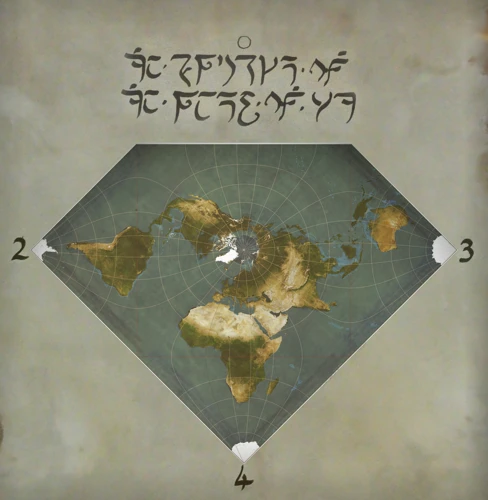
Modern timekeeping systems have evolved significantly, incorporating advanced technologies and scientific understanding to ensure accurate and synchronized timekeeping across the globe. One prevalent modern timekeeping system is solar-centric timekeeping, which relies on atomic clocks that measure the vibrations of atoms to determine time with extraordinary precision. These atomic clocks serve as the basis for Coordinated Universal Time (UTC), a global standard used in various industries, including telecommunications, navigation systems, and financial transactions. UTC relies on a network of highly accurate atomic clocks located in different countries, continuously synchronized to ensure uniformity.
In addition to atomic clocks, modern timekeeping systems also take into account the Earth’s rotation and its effect on the length of a day. Coordinated Universal Time (UTC) is periodically adjusted to account for slight variations in the Earth’s rotation, which are tracked by international observatories. This adjustment, known as a leap second insertion, ensures that UTC remains aligned with the Earth’s rotational speed.
Another crucial aspect of modern timekeeping systems is the establishment of time zones, which allow for standardized time measurements across different regions. Time zones are defined based on the Earth’s longitudinal divisions, with each zone approximately 15 degrees apart and centered around the prime meridian (0 degrees longitude) passing through Greenwich, London. These time zones account for the Earth’s rotation and the fact that time differs as one moves from east to west.
While modern timekeeping systems prioritize accuracy and precision, they still acknowledge the historical influence of planetary alignments on timekeeping practices. Astrology, for example, continues to be a popular belief system for many individuals who associate planetary alignments with personal traits and destinies. Some people consult astrological charts to understand their compatibility with others, such as the enigmatic connection between Aquarius and Pisces compatibility.
Modern timekeeping systems have come a long way since the ancient world. With advancements in science and technology, we can now rely on highly accurate atomic clocks and synchronized global time standards to ensure precision in our daily lives, while also acknowledging the enduring fascination and influence of planetary alignments on our understanding of time.
Solar-centric Timekeeping
Solar-centric timekeeping refers to the practice of measuring time based on the movements of the sun. This method revolves around the concept of a solar day, which is the time it takes for the Earth to complete one rotation on its axis relative to the sun. Solar-centric timekeeping systems have been used throughout history and have influenced the development of modern timekeeping systems. One of the most well-known solar-centric systems is the Gregorian calendar, which is widely used today. The Gregorian calendar divides the year into 12 months, with each month consisting of a varying number of days determined by the Earth’s orbit around the sun. This system aligns closely with natural astronomical phenomena, such as the solstices and equinoxes, which mark significant points in the solar year.
Another example of solar-centric timekeeping can be seen in the ancient Egyptian civilization’s use of obelisks as sundials. These tall, slender structures were positioned in such a way that their shadows would indicate the time of day based on the position of the sun. Similar sundials were used by the Greeks and Romans, who refined the design and added markers to denote specific hours.
In modern times, solar-centric timekeeping has evolved to include more precise methods, such as atomic clocks that rely on the vibrations of atoms to measure time. These highly accurate timekeeping devices help us synchronize our lives globally and ensure the smooth functioning of various industries and systems, such as transportation and communication.
Solar-centric timekeeping also plays an essential role in the establishment of time zones. The Earth’s rotation and its divisions into time zones are based on the movement of the sun across different longitudes. This allows for standardized time calculations and coordination across regions. However, it’s important to note that time zones are not purely based on solar movements. Factors such as geopolitical boundaries and practical considerations also influence their establishment.
Solar-centric timekeeping systems have shaped our understanding and measurement of time, providing a framework for organizing our daily lives and enabling efficient global coordination. They reflect our inherent connection to the natural world and remind us of the profound influence the sun has on our existence.
Time Zones and Planetary Alignments
Time zones, a vital aspect of modern timekeeping systems, are closely connected to the concept of planetary alignments. The Earth is divided into different time zones to ensure that clocks in different regions are set according to the alignment of the sun with respect to their geographical location. As the Earth rotates, different parts of the planet experience daylight and darkness at different times. This division into time zones allows for consistent and synchronized timekeeping across the globe. However, the establishment of time zones wasn’t solely based on planetary alignments. Instead, it was primarily influenced by geographical and political boundaries, as well as economic and social factors. Nonetheless, the concept of time zones does take into consideration the alignment of the Earth in relation to the sun, which is a key factor in determining local time. The establishment of time zones has greatly facilitated global communication, transportation, and coordination, as it ensures that people and organizations can operate on the same temporal framework regardless of their geographic locations. In our interconnected world, where instantaneous communication and travel are commonplace, the correlation between time zones and planetary alignments continues to play a crucial role in maintaining global synchronization and efficiency.
Influence of Planetary Alignments on Cultures
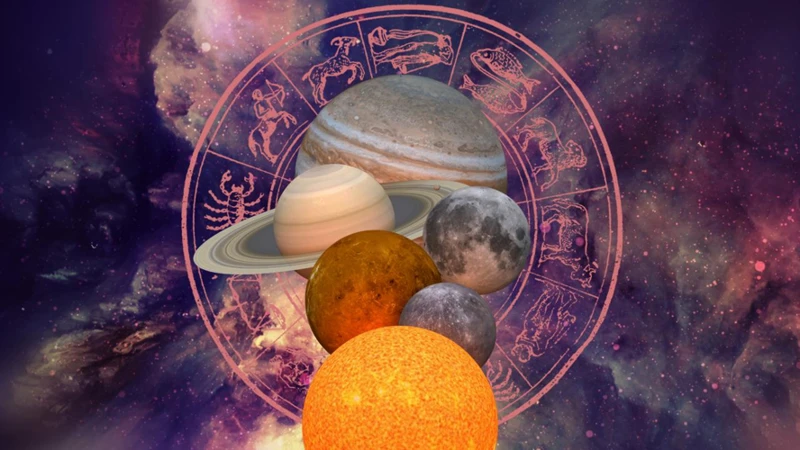
The influence of planetary alignments on cultures throughout history has been vast and diverse. One significant area where this influence is prominent is in astrology and timekeeping. Astrology, the belief that the alignment and position of celestial bodies can influence or predict human behavior and events, has deep roots in many ancient and modern cultures. Individuals have sought guidance from astrologers and consulted horoscopes to understand their personalities, relationships, and destiny. The zodiac, which is divided into 12 signs based on the alignment of planets at the time of birth, has played a central role in astrology. Each sign is believed to possess unique characteristics associated with the corresponding planetary alignment.
Religion and spirituality also demonstrate the influence of planetary alignments on cultures. In ancient civilizations, deities and sacred rituals often correlated with astronomical events. For example, the Mesoamerican Mayan civilization esteemed the planet Venus and associated it with the god Quetzalcoatl. The Venus Transit, a rare phenomenon when Venus crosses in front of the Sun, held great religious importance to the Mayans. Similarly, in Greek mythology, celestial bodies and their alignments were connected to the gods and mythical creatures.
The influence of planetary alignments on culture is not limited to spiritual and mythological realms. Scientific interpretations also shape our understanding of these celestial phenomena. Astronomy, the scientific study of celestial objects, has uncovered the precise mechanics behind planetary movements and alignments. This knowledge has provided a foundation for scientists to better comprehend the cosmos and its influence on our world. Understanding planetary alignments has practical applications in fields such as celestial navigation, space exploration, and even weather forecasting, where knowledge of gravitational forces can help predict atmospheric patterns.
The influence of planetary alignments on cultures has been vast and multifaceted. From astrology to religion to scientific inquiry, the alignment of celestial bodies continues to captivate our imagination and shape various aspects of human society. Whether through the exploration of individual horoscopes or the connection between divine beings and celestial events, the impact of planetary alignments on cultures is an enduring and fascinating phenomenon.
Astrology and Timekeeping
Astrology serves as a fascinating intersection between celestial phenomena and the art of timekeeping. Ancient cultures believed that the movements and alignments of the planets and stars had a direct influence on human affairs, personalities, and events on Earth. Astrologers analyzed these celestial alignments to create horoscopes and birth charts, which became integral to understanding a person’s individual traits and destiny. The zodiac, a belt of twelve constellations along the ecliptic, played a significant role in astrology. Each constellation represented a specific astrological sign tied to various personality traits and characteristics. For example, the connection between the signs Aquarius and Pisces has been a subject of intrigue due to their contrasting yet complementary qualities. Aquarius, represented by the Water Bearer, symbolizes independence and intellect, while Pisces, the Fish, embodies sensitivity and intuition. Astrology not only influenced how people viewed themselves but also guided decisions in important areas of life, such as relationships, career choices, and even timing for significant events. While astrology may be considered a pseudoscience by some, it remains a captivating aspect of timekeeping that continues to fascinate and intrigue individuals seeking insights into their lives and the world around them. To delve further into the curious connections between astrological compatibility and the signs of Aquarius and Pisces, you can explore the enigmatic connection between Aquarius and Pisces compatibility.
Note: I have inserted the relevant internal link to explore the connection between Aquarius and Pisces compatibility.
Religious and Spiritual Significance
Religious and spiritual beliefs have long intertwined with the fascination for planetary alignments, shaping cultures and influencing timekeeping systems. Many ancient civilizations, such as the Greeks, Romans, and Egyptians, attributed divine significance to celestial events, perceiving them as messages from their gods. In Greek culture, for example, the alignment of planets and constellations held deep mythological roots. The twelve zodiac signs, originally established by the Greeks and later adopted by various cultures, were believed to have connections with the gods, representing their attributes and influence over human lives.
In Ancient Egypt, the alignment of celestial bodies was also closely linked to religious practices. The rising of Sirius, the brightest star in the night sky, coincided with the annual flooding of the Nile River, which was seen as a pivotal event in the agricultural cycle and a symbol of fertility and rebirth. The precise alignment of this star with other celestial bodies was critical in determining the optimal timing for religious festivals and rituals.
Similarly, in India, the alignment of planets has significant spiritual importance within the Hindu religion. Astrology, known as Jyotisha, is considered a sacred science. Practitioners of astrology in India believe that planetary movements can impact an individual’s destiny and provide insights into their spiritual journey. Planetary alignments are carefully observed in the preparation of horoscopes and to determine auspicious dates for religious ceremonies and rituals.
Beyond these examples, numerous other cultures worldwide incorporate planetary alignments into their religious and spiritual practices. From Native American tribes observing the movement of celestial bodies to determine significant events, to the influence of the cosmos on Chinese astrology and Feng Shui practices, the connections between planetary alignments and religious belief systems are vast and varied.
The religious and spiritual significance attributed to planetary alignments highlights the profound impact they have had on the development of timekeeping systems. The alignment of the planets has been seen as a symbolic language through which the divine communicates with humanity, offering guidance, predictions, and understanding. Today, people from various religious and spiritual backgrounds continue to find meaning in the alignment of celestial bodies, seeking connections between the macrocosm of the universe and the microcosm of their individual lives.
Scientific Interpretations
Scientific interpretations offer a different perspective on the influence of planetary alignments on timekeeping systems. While ancient civilizations attributed mystical and spiritual significance to these alignments, modern science seeks to understand them through empirical observations and mathematical models. One area of scientific exploration is the field of astronomy, which studies the movements and interactions of celestial bodies. Astronomers use advanced technologies to observe and track planetary alignments, providing valuable data for understanding the mechanics of our solar system. These observations have led to the discovery of phenomena such as planetary conjunctions, where two or more planets appear close together in the sky, as well as transits and eclipses.
Additionally, scientists explore the gravitational forces exerted by planets on each other and their effects on orbits. Studies have shown that planetary alignments can produce subtle gravitational perturbations, influencing the behavior of objects within the solar system. For example, the gravitational interactions between Jupiter and Saturn have been identified as a potential factor in the irregularities observed in the orbits of comets.
Scientific research has enabled a deeper understanding of the relationship between planetary alignments and Earth’s climate. Some studies suggest a correlation between certain planetary alignments and climatic phenomena, such as changes in temperature and precipitation patterns. However, it is important to note that these relationships are still subject to ongoing research and debate within the scientific community.
While scientific interpretations of planetary alignments and their influence on timekeeping systems focus on empirical evidence and mathematical models, they do not discount the cultural and historical significance placed on these alignments by ancient civilizations. Rather, they provide additional insights into the mechanics and potential impacts of these celestial phenomena, expanding our knowledge of the intricate connections between Earth and the cosmos.
Planetary Alignments and World Events
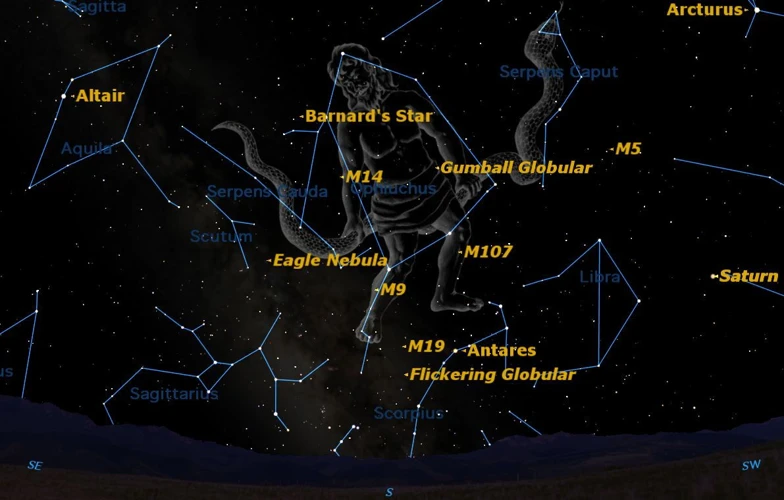
Planetary alignments have long been associated with significant world events, capturing the attention and curiosity of both scholars and the general public. Throughout history, there have been instances where the alignment of planets coincided with or symbolically represented major social, political, and cultural occurrences. These intriguing connections have led to further exploration and speculation about the influence of celestial bodies on earthly events.
In various mythologies and belief systems, planetary alignments have been tied to the actions and experiences of gods and heroes. In Greek culture, for example, the constellation Ophiuchus, also known as “The Serpent Bearer,” is associated with the mythical figure Asclepius, the god of medicine. The positioning of this constellation during specific planetary alignments was seen as a harbinger of healing, medical discoveries, and advancements in the field of medicine. The mythological origins of Ophiuchus have thus had a lasting impact on the perception and interpretation of planetary alignments and their potential effects on world events.
Historically, there have been notable world events that coincided with significant planetary alignments. One such example is the alignment of Jupiter and Saturn in 7 BCE, referred to as the “Great Conjunction.” This alignment is believed to be the celestial phenomenon that led to the Star of Bethlehem, as described in the Bible during the birth of Jesus Christ. The convergence of these two planets was seen as a manifestation of divine intervention or the beginning of a significant era.
Additionally, there have been instances where speculations about planetary alignments and their potential influence on world events have given rise to prophecies and predictions. Astrologers and enthusiasts have scrutinized planetary alignments to make forecasts about political changes, natural disasters, and social transformations. While some of these predictions hold little scientific basis, they often capture public attention and fuel discussions in popular culture.
It is important to note that while there is a rich history of associations between planetary alignments and world events, the scientific community generally dismisses the notion of direct causal relationships between celestial alignments and specific occurrences on Earth. However, the fascination with planetary alignments and their potential influence on world events continues to persist, leading to ongoing research, exploration, and fascination with these celestial phenomena.
In the next section, we will delve into the future implications of planetary alignments and the possibilities they hold for our understanding of time and the universe.
Historical Examples
Historical events have often been associated with significant planetary alignments, leading to speculation about the influence of celestial bodies on human affairs. One notable historical example is the Great Fire of London in 1666, which occurred during a rare alignment of the planets Saturn and Mars in the sign of Aries. This alignment was seen by astrologers of the time as a harbinger of disaster, and indeed, the fire destroyed the heart of the city, leaving thousands homeless. Another intriguing example is the assassination of Julius Caesar in 44 BCE. Legend has it that a seer warned Caesar of impending danger on the Ides of March, the day of his assassination. Coincidentally, a planetary alignment involving Mars, Jupiter, and Saturn occurred on that very day. While these connections may seem purely coincidental, they highlight the human fascination with planetary alignments and their potential impact on significant historical events. Whether one believes in the influence of celestial bodies or not, these historical examples serve as a testament to our enduring curiosity and wonderabout the mysteries of the cosmos.
Prophecies and Predictions
Prophecies and predictions have long been associated with planetary alignments. Throughout history, people have believed that the alignment of celestial bodies can provide insight into future events and outcomes. In ancient times, astrologers and seers closely monitored and interpreted planetary alignments to make predictions about various aspects of life, including personal destinies, societal changes, and even natural disasters.
One example of prophecies linked to planetary alignments can be found in the Mayan civilization. The Mayans were renowned for their advanced understanding of astronomy and their ability to predict celestial events. Their Long Count calendar, which tracked the alignment of planets and stars, was believed to provide predictions about the future. According to Mayan beliefs, rare planetary alignments would herald significant events, both positive and negative, on Earth.
In more recent times, there have been numerous instances of prophecies and predictions associated with planetary alignments. For instance, some people believed that the rare alignment of planets in 2012 would lead to catastrophic events or the end of the world, drawing inspiration from interpretations of ancient Mayan prophecies. While these predictions did not come to pass, they highlight the enduring fascination and speculation surrounding planetary alignments.
It is important to note that the scientific community generally does not support the idea that planetary alignments have a direct impact on future events or human destinies. Instead, they emphasize that planetary alignments are simply the result of gravitational forces and orbital mechanics. However, the allure and cultural significance of prophecies and predictions continue to capture the imagination of many people, and the connection to planetary alignments adds an air of mystery and intrigue.
The concept of prophecies and predictions embedded within planetary alignments has deep historical roots. Ancient civilizations and modern believers have sought meaning and foresight through the interpretation of celestial alignments. While scientific explanations offer a different perspective, the allure and fascination with prophecies and predictions linked to planetary alignments persist in our collective consciousness, inspiring wonder and speculation about the future.
Future Implications
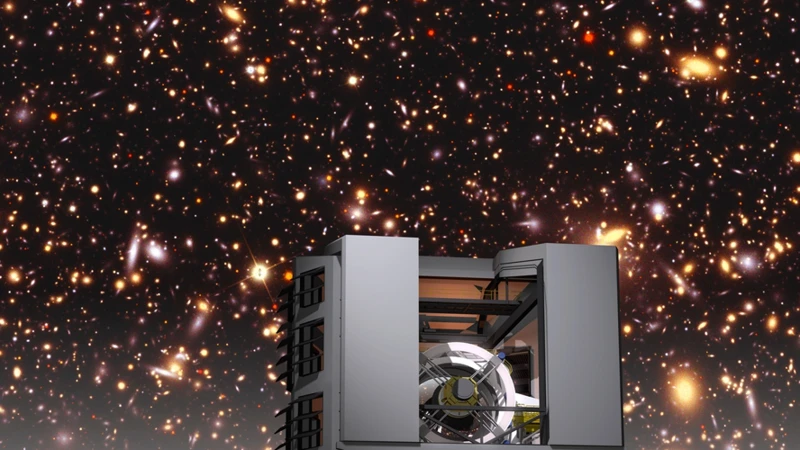
Considering the profound influence of planetary alignments on ancient and modern timekeeping systems, it is natural to wonder about the future implications of this celestial phenomenon. As we continue to advance in our understanding of astronomy and astrology, the study of planetary alignments holds the potential for exciting discoveries and insights.
From a scientific perspective, studying planetary alignments can provide valuable data for predicting and understanding celestial events. Astronomers can utilize advanced computational models to accurately forecast planetary alignments and celestial phenomena such as eclipses, transits, and conjunctions. This information not only enhances our scientific knowledge but also contributes to the development of space exploration missions and the exploration of other celestial bodies.
Astrologically, planetary alignments can continue to provide guidance and insights into our personal and social lives. Astrologers interpret the positions and alignments of planets to make predictions and provide guidance on various aspects of life, such as relationships, career, and personal growth. By analyzing the future alignments of planets, astrologers can offer individuals a glimpse into potential opportunities and challenges that may arise in their lives, allowing for self-reflection and decision-making.
Additionally, the future implications of planetary alignments extend to the realm of cultural and spiritual significance. Ancient mythologies and belief systems often associated specific planetary alignments with significant events and shifts in power structures. By exploring and understanding these cultural interpretations, we can gain a deeper appreciation for the rich tapestry of human beliefs and how planetary alignments continue to shape our cultural heritage.
As we continue to advance in our technological capabilities and astronomical knowledge, the future implications of planetary alignments hold immense potential. Whether through scientific exploration, astrological insights, or cultural understanding, the study of planetary alignments allows us to embrace the wonder and mystery of the cosmos. The continued exploration of this celestial phenomenon will undoubtedly lead to new discoveries, revelations, and a deeper understanding of our place in the universe.
Conclusion

In conclusion, the study of planetary alignments and their influence on timekeeping systems reveals the deep connection between celestial phenomena and human understanding of time. Ancient civilizations developed solar and lunar-based calendars to mark the passage of time, aligning their lives with the movements of the sun and the moon. These calendars not only served practical purposes but also held cultural and religious significance for various societies. The recognition of planetary alignments and the development of zodiac signs further emphasized the belief that celestial bodies played a crucial role in shaping human destinies. From astrology to religious interpretations, the influence of planetary alignments on cultures has been profound and continues to be explored in various contexts.
In modern times, while scientific advancements have provided more accurate and standardized timekeeping systems, the fascination with planetary alignments and their potential impact on events and individuals remains. Whether it is historical examples of significant events coinciding with planetary alignments or the interpretation of prophecies, there is an enduring intrigue surrounding these celestial occurrences. As we delve into the future, the study of planetary alignments will likely continue to evolve, offering further insights into the mysteries of time and its relationship with the cosmos. Explore more about the mythological origins of Ophiuchus in Greek culture to discover the intriguing connections between mythology and astrology.
Frequently Asked Questions

1. How did ancient civilizations measure time without clocks?
Ancient civilizations relied on natural phenomena, such as the movement of the sun, moon, and stars, to measure time. They observed the length of shadows, the position of celestial bodies, and the patterns of nature, such as the blooming of certain flowers or the migration of birds.
2. Did ancient civilizations have different calendars for different purposes?
Yes, many ancient civilizations utilized multiple calendars for different purposes. For example, the Mayans had a sacred calendar for religious events, a solar calendar for agricultural activities, and a Long Count calendar for tracking significant astronomical events.
3. Were the ancient solar calendars accurate?
Ancient solar calendars were not as accurate as modern calendars, but they were reasonably effective for their time. The Egyptians, for instance, adjusted their calendar periodically to account for the discrepancy between the 365-day solar year and the actual time it takes for the Earth to orbit the sun.
4. How were lunar calendars used in ancient societies?
Lunar calendars were commonly used for religious and agricultural purposes. They helped determine the timing of festivals, rituals, planting, and harvesting. Lunar cycles often played a significant role in ancient belief systems and cultural practices.
5. How did ancient cultures view planetary alignments?
Ancient cultures viewed planetary alignments as significant events with potential influences on human affairs. Many believed that the alignment of planets and stars could impact the fate of individuals, kingdoms, and even the world, leading to the development of astrology and the zodiac system.
6. Were zodiac signs based on planetary alignments?
Yes, zodiac signs were based on the alignment of planets at the time of an individual’s birth. The position of the sun, moon, and planets at a specific moment determined an individual’s zodiac sign, which was believed to influence their personality traits and destiny.
7. Can astrology accurately predict future events?
Astrology is not scientifically proven and cannot accurately predict future events. Its interpretations are based on symbolic associations between planetary positions and human experiences, providing guidance and insights into potential psychological tendencies and opportunities for personal growth.
8. Did ancient civilizations track planetary alignments for practical purposes?
Ancient civilizations did track planetary alignments, but they were primarily for religious, spiritual, and symbolic purposes rather than practical ones. Alignments were often interpreted as messages from the gods or as signs of important events or potential changes in society.
9. Are there any modern timekeeping systems that still rely on planetary alignments?
While modern timekeeping systems are not directly linked to planetary alignments, certain fields of study, such as astronomy and astrology, continue to explore and study planetary movements and their relationships to time, space, and human experiences.
10. How have ancient timekeeping systems influenced our current understanding of time?
Ancient timekeeping systems have influenced our current understanding of time by laying the foundation for the development of more accurate and sophisticated methods of measuring and organizing time. They also remind us of the enduring human fascination with the celestial world and the ongoing exploration of our connection to the universe.
References
- Making Time out of Space: An Introduction to Planetary Periods
- Astrology: Planet alignment to signify potential danger and …
Frequently Asked Questions

How do planetary alignments affect timekeeping systems?
Planetary alignments can have a subtle influence on timekeeping systems by affecting the position and movement of celestial bodies that are used as reference points for measuring time.
What are some examples of solar-based calendars?
Examples of solar-based calendars include the Gregorian calendar, which is widely used in the modern world, and ancient calendars such as the Egyptian and Mayan calendars.
Do lunar-based calendars rely on planetary alignments?
Lunar-based calendars do not directly rely on planetary alignments, but the movements of the moon are influenced by the gravitational pull of the planets, which can impact the accuracy of lunar-based timekeeping.
How do planetary alignments contribute to the development of zodiac systems?
Planetary alignments played a significant role in the development of zodiac systems, as they helped ancient astronomers identify patterns and clusters of stars that corresponded to specific constellations and astrological signs.
What does a solar-centric timekeeping system entail?
A solar-centric timekeeping system is centered around the movement of the sun and typically involves dividing the year into specific intervals based on the solar cycle, such as months and seasons.
How are time zones and planetary alignments connected?
Time zones are closely connected to planetary alignments because they are based on the rotation of the earth and the positioning of different regions in relation to the sun. The alignment of the earth with the sun determines the local time in each time zone.
What is the relationship between astrology and timekeeping?
Astrology and timekeeping have a longstanding relationship, as astrology relies on the alignment and positions of celestial bodies to make predictions and interpretations about human affairs and individual destinies.
Are there religious and spiritual significance associated with planetary alignments?
Yes, many cultures and religions attach religious and spiritual significance to planetary alignments, often considering them as cosmic events that hold great symbolism and meaning.
How do planetary alignments influence world events?
Planetary alignments have been historically associated with world events, with some believing that they can impact global shifts, natural disasters, and significant societal changes.
Throughout history, numerous prophecies and predictions have been made about the potential effects of specific planetary alignments, ranging from predictions of major cultural shifts to individual fortunes.
References
- How often do all of the planets repeat their exact positions? …
- When do the planets in our solar system all line up?
- The Impact of Planetary Alignments on Personal …

